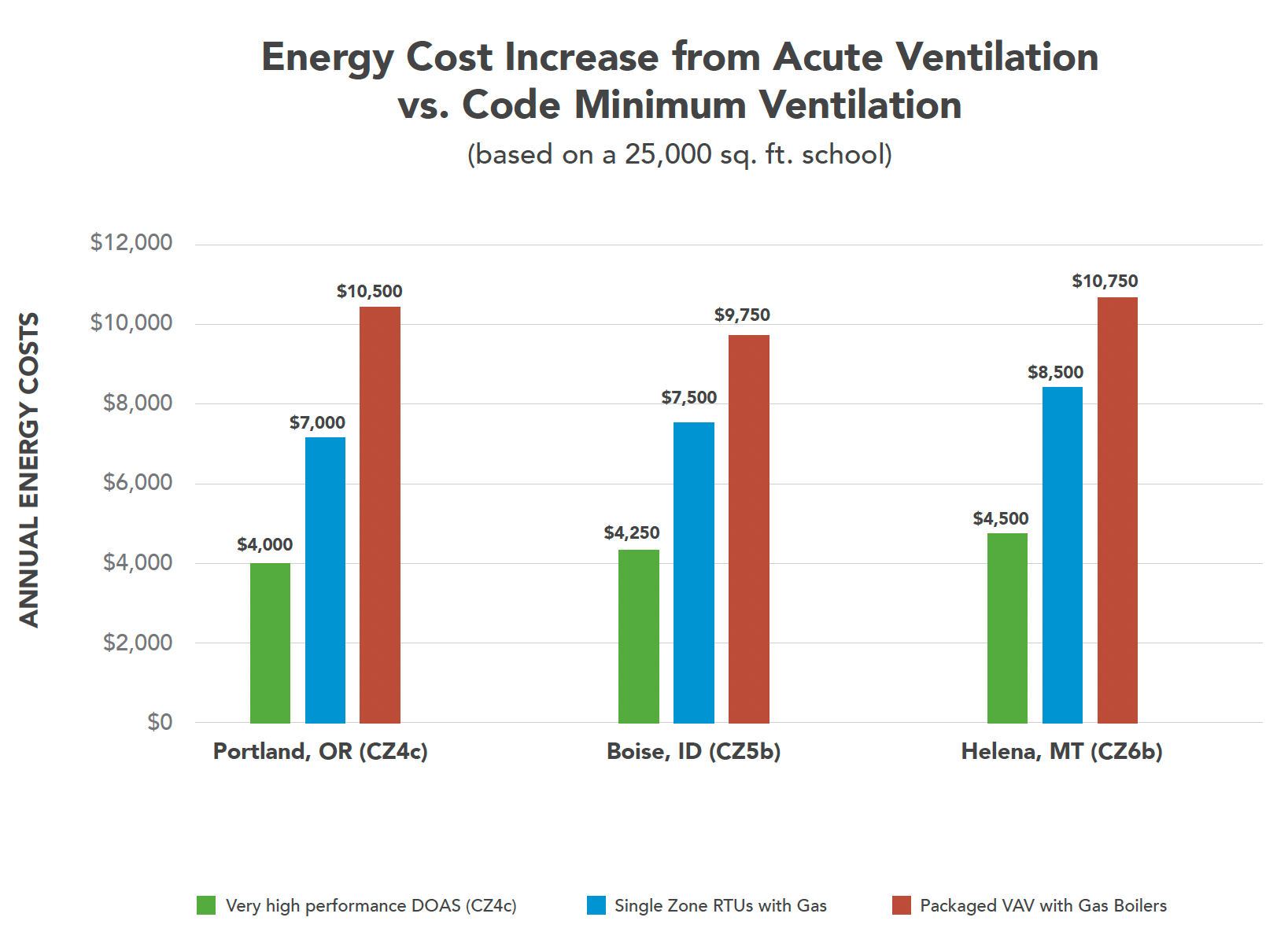For building owners and operators everywhere, the COVID-19 pandemic has magnified the importance of enhancing indoor air quality through better approaches to commercial HVAC and natural ventilation. And the country’s leading institutions agree. Both the American Society of Heating, Refrigerating and Air-Conditioning Engineers (ASHRAE) and the Centers for Disease Control and Prevention (CDC) have asserted the importance of prioritizing HVAC solutions that feature enhanced filtration and ventilation, and that increase introduction of outdoor air, while limiting the re-entry of contaminated air.
“How many pathogens you take in depends on one factor in particular: how much fresh air is coming into the building. Most buildings are poorly ventilated. But in a good building—that is, one designed to bring in significantly more outdoor air than building codes in the United States and elsewhere typically require—the proportion of indoor air that comes from other people’s lungs can be brought down to a level at which infection across the room is unlikely.”
—Joseph Allen, Harvard University[1]
While the best HVAC approaches support occupant health by increasing ventilation rates to provide cleaner, healthier outdoor air, many commercial buildings do not offer occupants adequate ventilation. This increases occupant exposure to dangerous virus-containing particles that move with a building’s indoor air currents.
For example, a standard variable air volume system, or VAV system, delivers air at a constant temperature, varying the amount of air to keep people comfortable depending on the season. Because some of this air is recirculated indoor air—not fresh outdoor air—virus particles can spread through the building’s indoor airstreams. And when there is no call for heating or cooling, the VAV system doesn’t introduce fresh air at all.
[1] https://www.theatlantic.com/ideas/archive/2021/10/fresh-air-cool-new-office-amenity/620288
High-performing HVAC approaches reduce viral risk, but not always efficiently
There are a variety of ways to improve HVAC performance and decrease viral spread, including using a high-efficacy filter combined with increased ventilation rates. This combination will provide increased airflow and a supply of fresh air, while exhausting potentially contaminated air to the building’s exterior.
A recent study[1] conducted by the Northwest Energy Efficiency Alliance (NEEA), Red Car Analytics (RCA) and the University of Oregon (UO) proves how crucial ventilation is to reducing the spread of dangerous particles. The study shows that increasing the airflow, or ventilation rates, by 33% can reduce in-room viral risk by more than 7%, while increasing ventilation by 217% and adding an in-room filtration unit can reduce that risk by more than 25%.
However, the study also demonstrates that increasing ventilation rates to this degree can significantly increase energy costs for less efficient HVAC systems and approaches.
“Our research has shown that aerosol viral load can be significantly decreased with natural ventilation, mechanical ventilation, filtration and even humidification. Now, we must implement these approaches in a manner that also address energy efficiency priorities.”
—Kevin Van Den Wymlenberg, University of Oregon[2]
[1] https://betterbricks.com/resources/covid-19-hvac-risk-reduction-strategies
[2] https://www.researchsquare.com/article/rs-861942/v1, https://www.researchsquare.com/article/rs-940891/v1
Resilient HVAC doesn’t have to cost so much
Thankfully, there are higher efficiency HVAC solutions that can run efficiently under acute ventilation conditions to reduce viral risk at a much lower operational cost. For example, the NEEA/RCA/UO study found that a very high efficiency dedicated outdoor air system (very high efficiency DOAS[1]) was able to significantly increase ventilation rates to reduce viral risk while using up to 37% less energy than less efficient HVAC options.
By contrast, when operating at higher ventilation rates, two less efficient options—a single zone rooftop unit (RTU) and a packaged VAV system—increased operational energy costs by 42% and 46%, respectively, when compared to normal operating conditions. The study also showed multi-zoned VAV systems as the least efficient option, with a 75% increase in energy costs when running at higher ventilation rates.
[1] https://betterbricks.com/solutions/very-high-efficiency-dedicated-outside-air-systems
 Operational energy cost increases per year for a sample small school under acute ventilation operations vs. code minimum ventilation operations. Simulated results for three climate zones, CZ4c, 5b, 6b.
Operational energy cost increases per year for a sample small school under acute ventilation operations vs. code minimum ventilation operations. Simulated results for three climate zones, CZ4c, 5b, 6b.Preparing for future extremes with healthy and efficient HVAC solutions
In addition to efficient performance under increased ventilation rates, the very high efficiency DOAS approach has also recently demonstrated resiliency under other extreme conditions. When temperatures in parts of the Northwest reached record highs in June 2021, many HVAC systems struggled to maintain their setpoints. However, a very high efficiency DOAS installation in a Portland, Oregon, office building was able to maintain an inside temperature within 2 degrees of its setpoint. This performance is notable under record-breaking 116 degree outside temperatures and following a recent downsizing of HVAC equipment during the building’s very high efficiency DOAS upgrade.
“There were two days in June 2021 that were the hottest recorded days in Portland’s history. Incredibly, our office stayed quite comfortable during this period. At the hottest part of the day, the temperature at most of the workstations was around 75–77 degrees, even though it was 116 degrees outside. We used to have trouble keeping the upstairs comfortable on 80-degree days, but with our new system, we now feel comfortable and healthy in pretty much any situation.”
—Ola Miles, Office Manager, Energy 350
The very high efficiency DOAS solution isn’t the only option for improving indoor air quality while also managing operating costs. High-performing gas RTUs (also known as Efficient RTUs[1]), for example, use features like secondary condensing heat exchangers, high insulation values, improved cabinet design, low-leakage dampers and heat or energy recovery to reduce energy use by up to 40% compared to standard RTUs under normal conditions.
Now more than ever, HVAC design requires careful attention to maintain efficiency and resiliency under extreme conditions to ensure safe, clean air and comfortable temperatures for commercial building occupants. High-performance HVAC products and approaches like very high efficiency DOAS and high-performance gas RTUs offer healthy solutions that can also reduce the overall costs of building operation.
[1] https://betterbricks.com/solutions/efficient-rooftop-units
